Bellagio, Lombardy
| Bellagio | ||
|---|---|---|
| Comune | ||
| Comune di Bellagio | ||
 | ||
| ||
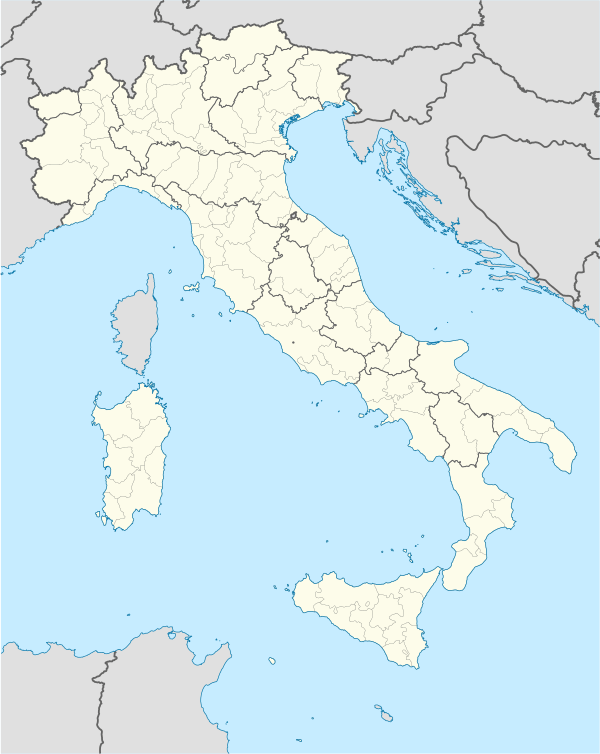 Bellagio Location of Bellagio in Italy | ||
| Coordinates: 45°59′N 09°15′E / 45.983°N 9.250°ECoordinates: 45°59′N 09°15′E / 45.983°N 9.250°E | ||
| Country | Italy | |
| Region | Lombardy | |
| Province | Como (CO) | |
| Government | ||
| • Mayor | Mario Gatti | |
| Area | ||
| • Total | 26 km2 (10 sq mi) | |
| Population | ||
| • Total | 2,945 | |
| • Density | 110/km2 (290/sq mi) | |
| Demonym | Bellagini (it.); Belagìn (west.lmo.) | |
| Time zone | CET (UTC+1) | |
| • Summer (DST) | CEST (UTC+2) | |
| Postal code | 22021 | |
| Dialing code | 031 | |
| Patron saint | Saint James | |
| Saint day | July 25 | |
| Website | Official website | |
Bellagio (Belàs [beˈlaːs] in Lombard) is a comune (municipality) in the Province of Como in the Italian region of Lombardy, located on Lake Como. It has long been famous for its setting at the intersection of the three branches of the Y-shaped lake, which is also known as Lario.
Bellagio is situated at the tip of the peninsula separating the lake's two southern arms, with the Alps visible across the lake to the north.
Geography
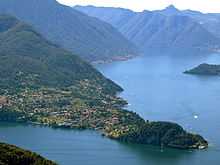
Bellagio is situated upon the extreme cape of the region that divides the Lake Como in two bifurcations. The tourist centre occupies the extreme part of the promontory, while the numerous districts are disseminated both along the lake shores and upon the slopes of the hills. The great Pleistocene glaciations with their imposing flows coming from the Valtellina and Valchiavenna modelled the actual landscape of the Lake Como: for at least four times the glaciers went as far as the Brianza to the South. From the ancient glacial blanket only the highest tops emerged, one of them was mount St. Primo, which obliged the glaciers to divide themselves into two arms. A luxuriance of trees and flowers is favoured by a mild and sweet climate. The average daytime temperature during winter is rarely below 6 to 7 °C (43 to 45 °F), while during summer it is around 25 to 28 °C (77 to 82 °F), mitigated during the afternoon by the characteristic breva, the gentle breeze of the Lake Como.
History
Bellagio, also known as "the pearl of Lake Como", was already famous in the Roman era. Its beautiful and strategically important position has written its history.
Prehistory to Roman Empire
Even though certain findings testify to a human presence in the surroundings of Bellagio in the Paleolithic Period (about 30,000 years ago) only in the 7th–5th centuries BC on the promontory appears a castellum, a place of worship and of exchange, which served the numerous small villages on the lake.
The first inhabitants of the territory of the Bellagio which history is able to acknowledge that there were the Insubri, who dwells in a part of the Lombardy, and then the Lake of Como, until the height of the center of the lake, where bordered on the networks (the western shore of Lake Como) and the Orobi (east bank). The Insubri lived free and independent until the arrival of the Gauls, led by Belloveso, who, around the year 600 BC, the Insubres undone, they settled in Milan and Como, and occupied the shores of the lake, created in a garrison extreme point of their conquest, Bellagio (Bellasium, named after their commander Belloveso). The Gauls became Gallo-Insubri, merged with the primitive inhabitants and introduced their customs and traditions, took root so as to leave footprints also in the names of the territory Bellagio: Crux Galli (now Grosgalla), on the side of Lezzeno, and "Gallo", a small chapel on the old road of Limonta, which marks today the border between the two municipalities.
The Romans introduced the olive tree and the laurel which are still found in abundance on the shores of the lake. The Romans were the first to use Bellagio as a holiday resort. Pliny the Younger (1st century AD) describes in a letter the long periods he spent in his Bellagio villa, during which he practised not only study and writing but also hunting and fishing.
Middle Ages
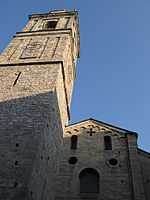
After the Lombard occupation of northern Italy, Bellagio was further fortified: in 744 King Liutprand, settled there. It is thought that by 1100 Bellagio was already a free commune and seat of a tribunal and that its dependence on Como was merely formal. However the strategic position of Bellagio was very important for the city of Como, which had therefore to suffer more than one incursion from Como and fought numerous naval battles against its neighbour. In 1154, under Frederick Barbarossa, Bellagio was forced to swear loyalty and pay a tribute to Como.
Towards the end of the 13th Century, Bellagio, which had participated in numerous wars on the side of the Ghibellines (pro-empire party), definitely became part of the property of the House of Visconti and was integrated into the Duchy of Milan. In 1535, when Francesco II Sforza (the last Duke of Milan) died, there started for Lombardy and for the lands of the Lake of Lario two centuries of onerous Spanish rule (the period about which the novel The Betrothed was written by Alessandro Manzoni). The steps called “Derta”, that lead from the neighbourhood of Guggiate to that of Suira, were built during the Spanish rule. In 1533 Francesco Sfondrati bought the feoff of Bellagio and for more than 200 years the Sfondrati family remained the most important reference point for Bellagio and its entire history together with the progress and happenings of the town were associated with this family. At Bellagio in this period, favoured by the ideal position for transport and trade, there flourished various small industries among which that for the production of candles was particularly notable and that for silk production together with its corollary, the breeding of silk worms and the cultivation of mulberry trees.
18th and 19th centuries
_-_Veduta_di_Bellagio_-_Lago_di_Como.jpg)
With the death of Carlo Sfondrati in 1788, the feoff of Bellagio passed in the hands of the illustrious family of Serbelloni.
During the brief Napoleonic period the port of Bellagio assumed a military and strategic importance and a fact, apparently of secondary importance, was to guide the destiny of Bellagio for the two succeeding two centuries: the decision of Count Francesco Melzi d'Eril, Duke of Lodi and Vice President of the Cisalpine Republic to establish here his summer home. Count Melzi proceeded to build on the west bank, near Loppia a magnificent villa. That brought to the area the flower of the Milanese nobility and the promontory was transformed into a most elegant and refined court. Roads suitable for carriages were built, first of all to link the villas and the palaces and then towards the town centre and finally the provincial road Erba-Bellagio was completed. The fame of the lakeside town became known well outside the borders of the Kingdom of Lombardy–Venetia: even the Emperor Francis I of Austria wished to visit it in 1816 and returned in 1825 to stay in the Villas Serbelloni, Trotti and Melzi.
In 1838 Bellagio received with all honours the Emperor Ferdinand I, the Archduke Rainer and the Minister Metternich, who reached here from Varenna on the Lario, the first steamboat on the lake, having been launched in 1826. Bellagio was one of the localities most frequented by the Lombardy nobility and saw the construction of villas and gardens. Luxury shops opened in the village and tourists crowded onto the lakeshore drive. Space was not sufficient and it was decided to cover the old port which came up as far as the arcade in order to construct a large square.
Tourism had now become the principal economic resource of the people of Bellagio and from this period on the history of Bellagio coincides with that of its hotels. The first was the Hotel Bellagio, founded in 1825 from the transformation of the old hostelry of Abbondio Genazzini, which following this was turned into the first real hotel on the Lario, the Hotel Genazzini. Following the example of this precursor were founded in the space of a few years several splendid hotels many of which are still operating and frequently in the hands of the same families who founded them. A few names and date of opening: the Hotel Firenze, built on the old house of the Captain of the Lario in 1870, the Grand Hotel Bellagio (now the Grand Hotel Villa Serbelloni) inaugurated in 1872. In 1888 the three largest hotels (Genazzini, Grande Bretagne and Grand Hotel Bellagio) first introduced electric light substituting the gas illumination, and only after this were they followed by many patrician homes. Bellagio was one of the first Italian tourist resorts to become international, and since that time it never degenerated into a mass tourism place.
Villa Melzi d'Eril
The significant building, which overlooks the lake, was built between 1808 and 1815 by the architect Giocondo Albertolli upon a request by Francesco Melzi d'Eril, nominated Duke of Lodi by Napoleon himself and for whom he fulfilled the role of vice-president of the Italian Republic from 1802. From 1805, with the advent of the short-lived Napoleonic Kingdom of Italy he fulfilled the role of Chancellor of the Empire.
Even after his political career, since this was a Melzi residence, the construction, which he wanted as elegant as the Royal Villa of Monza and the other villas situated on the Lake of Como, was decorated and furnished by famous artists of the period: artists Appiani and Bossi, sculptors Canova and Comolli, and the Luigi Manfredini.[1] He also had a collector’s passion which, in his region on Lake Como, did not have any rivals except for the figure of Giovan Battista Sommariva, owner of the villa bearing the same name (nowadays Villa Carlotta), who, politically defeated by Melzi himself (who was preferred by Napoleon Bonaparte in 1802 as vice-president of the Italian Republic), tried to re-acquire the lost prestige by assembling an extraordinary art collection.
Villa Melzi is introduced by its English style gardens which develops harmoniously along the lake’s banks, the last offshoot in the hill picture of the peninsula of Bellagio, to the south of the inhabited area. The realisation of such a garden implied notable interventions to the structure of the land and the realisation of outstanding supporting walls. In such surroundings, enriched by monuments, artefacts (amongst which a Venetian gondola transported to Bellagio, expressly desired by Napoleon, and two precious Egyptian statues), rare exotic plants, secular trees, hedges of camellias, groves of azaleas and gigantic rhododendrons, the villa, the chapel and the glass house constitute an extraordinary ensemble in which the neoclassical style reaches one of the highest peaks.
Transport
Air
The airports nearest to Bellagio are:
- Malpensa International Airport (MXP), Milan
- Linate Airport (LIN), Milan
- Orio al Serio International Airport (BGY), Bergamo
Rail
The railway station nearest to Bellagio is in Asso. The railway lines nearest to Bellagio are:
- Milan - Como (two lines, operated respectively by Trenitalia and LeNord)
- Milan - Varenna (operated by Trenitalia)
- Milan - Lecco (operated by Trenitalia)
- Milan - Asso (operated by LeNord; nearest railway station)
For more information on trains, see Trenitalia or LeNord (in Italian)
Hydrofoil
A hydrofoil runs from Como to Bellagio, making stops at the other towns on Lake Como along the way. A ferry also runs from Varenna to Bellagio. For more information, visit Gestione Governativa Navigazione Laghi.
Road
Bellagio is accessible by narrow and windy roads from Como and Lecco. It is much safer to drive from Como up to Cadenabbia and use the reasonably priced car ferry for the quick trip across to Bellagio. The road from Como up the eastern side of the left leg of the lake is very narrow and windy. Public buses run daily from Como to Bellagio. An alternative could be to follow the four lane road on the eastern shore of the right leg of the lake, travel to Varenna and take the ferry to Bellagio.
Culture
The Rockefeller Foundation has operated its Bellagio Center on Lake Como since 1960. The Bellagio Center operates two main programs: residencies and conferences. The residency program offers influential scholars, artists, writers, scientists, policymakers and other professionals from around the world the opportunity to pursue ideas and to engage others in their work. The conference program aims to bring notable and diverse participants from around the world together to share ideas, to debate and to collaborate.
International relations
Bellagio is a founding member of the Douzelage, a unique town twinning association of 24 towns across the European Union. This active town twinning began in 1991 and there are regular events, such as a produce market from each of the other countries and festivals.[2][3] Discussions regarding membership are also in hand with three further towns (Agros in Cyprus, Škofja Loka in Slovenia, and Tryavna in Bulgaria).
-
 Altea, Spain (1991)
Altea, Spain (1991) -
 Bad Kötzting, Germany (1991)
Bad Kötzting, Germany (1991) -
 Bundoran, Ireland (1991)
Bundoran, Ireland (1991) -
 Granville, France (1991)
Granville, France (1991) -
 Holstebro, Denmark (1991)
Holstebro, Denmark (1991) -
.svg.png) Houffalize, Belgium (1991)
Houffalize, Belgium (1991) -
 Meerssen, Netherlands (1991)
Meerssen, Netherlands (1991) -
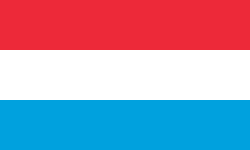 Niederanven, Luxembourg (1991)
Niederanven, Luxembourg (1991) -
 Preveza, Greece (1991)
Preveza, Greece (1991) -
 Sesimbra, Portugal (1991)
Sesimbra, Portugal (1991) -
 Sherborne, England, United Kingdom (1991)
Sherborne, England, United Kingdom (1991) -
 Karkkila, Finland (1997)
Karkkila, Finland (1997) -
 Oxelösund, Sweden (1998)
Oxelösund, Sweden (1998) -
 Judenburg, Austria (1999)
Judenburg, Austria (1999) -
 Chojna, Poland (2004)
Chojna, Poland (2004) -
 Kőszeg, Hungary (2004)
Kőszeg, Hungary (2004) -
 Sigulda, Latvia (2004)
Sigulda, Latvia (2004) -
 Sušice, Czech Republic (2004)
Sušice, Czech Republic (2004) -
 Türi, Estonia (2004)
Türi, Estonia (2004) -
 Zvolen, Slovakia (2007)
Zvolen, Slovakia (2007) -
 Prienai, Lithuania (2008)
Prienai, Lithuania (2008) -
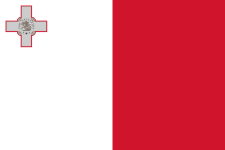 Marsaskala, Malta (2009)
Marsaskala, Malta (2009) -
 Siret, Romania (2010)
Siret, Romania (2010)
| Wikimedia Commons has media related to Bellagio. |
Further reading
- Parry, G. S. (January–June 1907), "Inscriptions at Bellagio [foreigner's cemetery], Italy", Notes and Queries, Tenth VII, pp. 61–62
External links
- Official website (Italian) (English)
- Bellagio's Association of Tourism and Economic Operators
- History of Bellagio
- News and Events: Bellagio (English)
- Gestione Governativa Navigazione Laghi for information on the hydrofoil (Italian) (English)
- Photo Gallery (Italian)
References
- ↑
- Carroti, Giulio (1901). Delle Capi d'arte: appartenenti a S.E. la duchessa Joséphine Melzi d'Eril-Barbò. p. 122.
- ↑ "Douzelage.org: Home". www.douzelage.org. Retrieved 2009-10-21.
- ↑ "Douzelage.org: Member Towns". www.douzelage.org. Retrieved 2009-10-21.
| |||||||||||||||||||||||||||||||||||||||||
| ||||||
| ||||||||

